
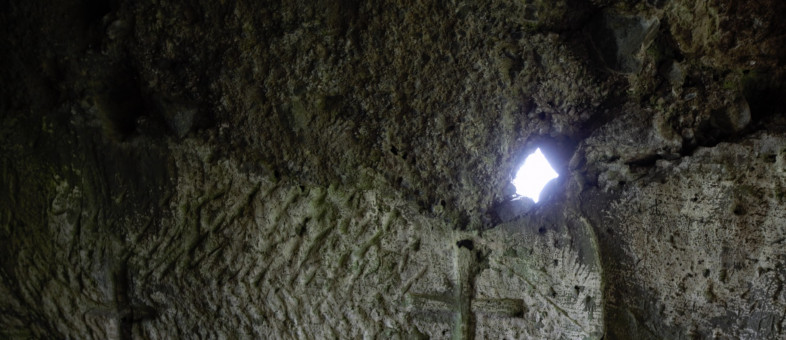
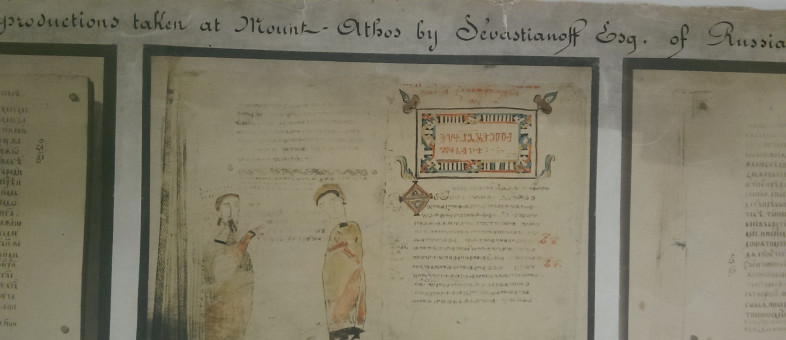
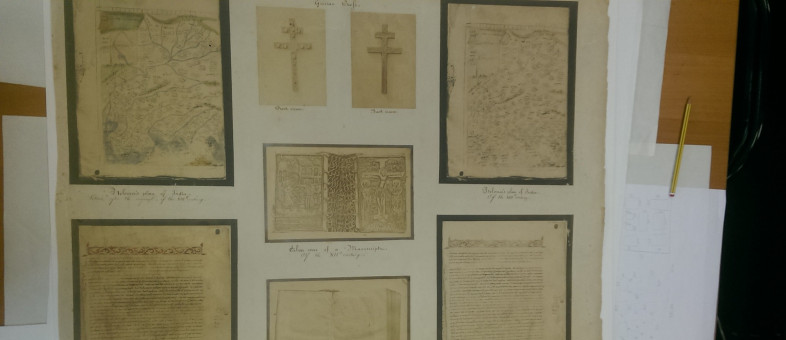
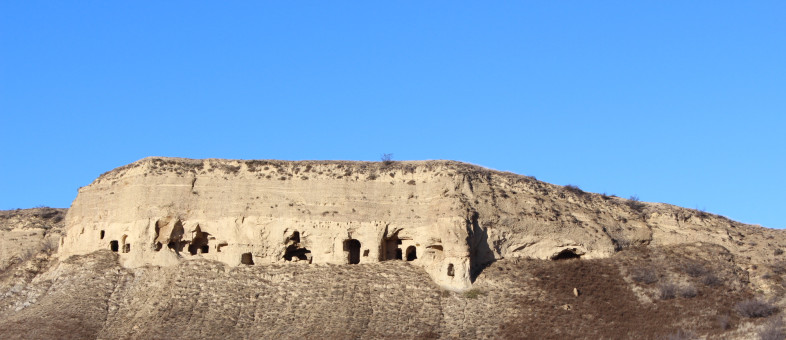
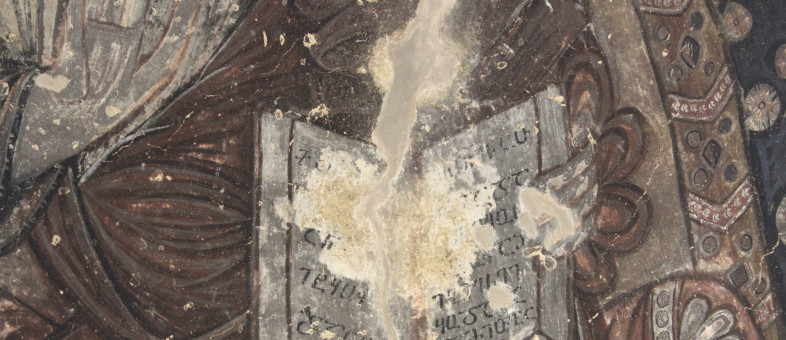

The event will be held in the hall of the Kirillo-Belozersky Museum-Reserve from October 1 to 3!
Liturgy as Practice, Space,
and Theory in Eastern Christianity
Kirillov, October 1-3, 2019
Lecture
Ewa Balicka-Witakowska (Institute of Linguistics and Philology, Uppsala University)
The Ethiopic Illustrated Pieces of Liturgical Poetry: The Miracles of Mary (Täʾammǝrä Maryam) in the Manuscript of the Gännätä Maryam Church.
In Ethiopia, where the cult of the Virgin Mary was always particularly cherished, the Täʾammǝrä Maryam became part of the liturgy. These texts, written in prose, were gathered in the collections comprising various numbers of stories. From the 17th century on, the thirty three so-called canonical miracles were in some manuscripts followed by the hymnographic poems and illustrated. An exception is the 18th century manuscript belonging to the church Gännätä Maryam (the Garden of Mary), which contains exclusively the poetic pieces and the miniatures independent from the pictorial canon created for the miracles. I intend to analyse some examples of these compositions with the aim to trace their relations to the original narratives, hymnographic versions and pictorial equivalents, as well as to extract information about the author of this unique work and the history of the manuscript.
Scholarly Papers
Aleksandr Andreev (Department of Classical Languages, St. Petersburg Theological Academy)
New Evidence of the Reform of Liturgical Books by Russian Old Believers
The Old Believers (Old Ritualists) rejected the liturgical books reformed under Patriarch Nikon and the subsequent patriarchs in the 17th century and continued to use pre-Nikonian liturgical books in their worship. However, a study of the notated Hirmologion, which circulated in manuscript form until the 19th century, reveals that the Old Believers nonetheless carried out their own reform of notated chantbooks. In addition to the removal of khomony, the reformed manuscripts contain a text of the hirmoi that was edited on the basis of Slavonic liturgical books printed under Patriarchs Joasaph I and Joseph. These results allow us to confirm that the topic of liturgical and linguistic reform in the 17th century was not limited to Patriarch Nikon and his correctors at the Moscow Print Yard, but was also discussed by Patriarch Nikon's opponents, who, however, treated the Muscovite printed books, rather than the Greek books printed in Venice, as an authoritative source for liturgical texts.
Mikayel Arakelyan (The Four Rivers Fund of Oriental Christian Studies Development, Moscow)
New Discovered Armenian Manuscript in Astrakhan: ‘Commentaries on the Divine Liturgy’ by the 13th–15th-centuries Theologians of Armenian Apostolic Church
Among thousands Armenian medieval manuscripts come across unique liturgical books (Hymnals, Book of Feasts, Missals etc.) adorned with various miniatures and ornamental motifs. One of such rare liturgical manuscript containing some theological commentaries on the Armenian Divine Liturgy was recently discovered during my research mission to the State Historical and Architectural Museum-Reserve of Astrakhan (the study was funded by RFBR, project No. 170400643-OGN, 2017–2019).
The commentaries belong to the authorship of significant medieval theologians as Hovhannes of Archesh the Lentil-eater (alias Yovhannēs Arčišec῾i Ospnaker, 1260? –1330?), Grigor of Khlat the Old Man (alias Grigor Xlat῾ec῾i Cerenc῾, 1350–1425) et al. Their works are important sources for the study of the Armenian mass and the Eucharistic rite. However, the manuscript was copied and richly illuminated by the master Kirakos of Avendan for a certain priest Sargis the pilgrim, presumably in one of scriptoria of the province of Mokk῾ (south of Lake Van, Western Armenia) in 1603.
A number of important aspects such as the provenance, the style of miniature painting, iconography and paleography as well as the link of images to the liturgical text will be elucidated on this conference. Analysis of the content and illuminations reveals the great value of this manuscript for many branches of research, especially the history of art, liturgy and theology of the Christian Orient.
Vladimir Baranov (Novosibirsk State University of Architecture, Design and Art, Novosibirsk)
Theological Polemics in the Homiletical and Liturgical Works of Theodore the Studite
Although Theodore the Studite is primarily known as a monastic leader and champion of icon-veneration, he was also a prolific homilist and hymnographer. I order to “put together” these two aspects of his personality, it is proposed to look at the latter aspect of literary heritage from the perspective of the theological debates of his time – not only Iconoclastic Controversy which repeatedly surfaced in his writings of these kinds, but also the debate on the predetermination of the terms of human life and other theological problems. The paper proposes to see to what extent the turbulent events of his life and polemics he was engaged in made an impact on the homiletical and liturgical works attributed to Theodore the Studite, which may provide additional arguments for the authorship.
Lora Gerd (St. Petersburg Institute of History of the Russian Academy of Sciences, St. Petersburg, Russia)
Petr Sevastianov and his expeditions to Mount Athos (1850-s): two cartons from the French Photographic Society
The Russian antiquarian and explorer of the Orthodox East Petr Ivanovich Sevastianov was one of the first to take photos of the architectural monuments, arts treasures and manuscripts of Mount Athos. During the 1850-s he organized several expeditions. In 1856 Sevastianov studied photography in Paris at the atelier of Belloc, bought the materials and equipment needed. In March 1857 he arrived at Athos, and started his work in St. Andrew skete. With the assistance of the librarian of St. Panteleimon monastery Azarii, Sevastianov got access to many Greek and Slavonic manuscripts. In October 1857 he returned to Paris and presented the results of his work in a photo exhibition, followed by a public lecture at the Academy on February 5, 1858. The recently discovered two large format cartons of Sevastianov’s photos at the French Photographic Society, along with the correspondence preserved in his archives, are an important contribution to the history of Byzantine studies.
Jana Howlett (Emeritus Lecturer and Fellow, Jesus College, University of Cambridge)
Saints lives as a paraliturgical or extra-liturgical practice, with specific reference to two Muscovite texts
Studies of the Lives of Saints in the Russian tradition have largely concentrated on the texts, rather than the contexts, of the works. This paper will discuss two important Muscovite Lives and ask what they and their manuscript tradition can tell us about the function of the texts as liturgical or extra-liturgical. It is an attempt to develop recent scholarship on hagiography as a liturgical act.
Both Metropolitan Petr and Sergei of Radonezh are 14th century saints, and their Lives can both be classified as foundation legends, of the Muscovite Church and Muscovite monasticism respectively. Their Lives can be found in chronicles, synaxaria and menologia. The paper will suggest reasons for similarities and the differences in the manuscript context and raise a number of questions.
Ljubica Jovanović (American Public University System)
Їѡсифь Прѣкрасни, a Christian Mystic
In medieval Slavic texts, the Slavonic name for Joseph the son of Jacob (Gen 37-50), Їѡсифь прѣкрасни (the most beautiful Joseph), discloses a radiant beauty of a pious and contemplative Christian. The light with which Joseph shines is the energy of the divine light, of the same quality as the halo of the saints on frescoes and icons. However, shining is not a frequent hagiographical trope. Joseph in Slavonic texts appears as a Christian mystic whose saintly behavior and communication with God enables him to radiate divine light. In this way, the image of Їѡсифь прѣкрасни is a precursor of 14th century hesychasm. Although the concept is taken over from Greek, Ιωσήφ ο Πάγκαλος, it became very popular in Church-Slavonic literature. This paper will show the connection of the divine radiation to Joseph’s Slavic title: Їѡсифь прѣкрасни.
Maria Korogodina (Library of the Russian Academy of Sciences, St.Petersburg, Russia)
Hegumens’ service according to the rules of Constantinople council of 1276
Russian bishops did not pay any attention to the hegumens’ service till the end of 13th century. There were not special Euchologia for bishop or hegumens; and service references relative to the features of liturgy, daily and annual sequence of service led by hegumen were lacking in handwritten Service books. Some questions concerned to the specific character of hegumens’ and bishops’ service were examined in detail in the rules of Constantinople council which answered to Saraj bishop Theognost in 1276. One can find there several enactments about peculiarities of hegumens’ service, for example reading of Gospel by hegumen during liturgy; singing of Trisagion with ripidia; service on proskoimedia; celebrating of Divine liturgy by hegumen; and dedication of new church. Some other questions concerned to rites which only hegumen may perform, for example entrusting monk vows. The analysis of these texts let to define which of them are the answers of Greek bishops and which were added to the main text by Russian scribes in 14th century.
Basil Lourié (Institute of Sociology of the Russian Academy of Sciences; Scrinium)
The Liturgical Calendar in the Book of Judith
The chronological data presented in the Book of Judith are analysed as markers of a liturgical calendar. The book itself is a “scroll”, that is, a short book for reading at a given feast, which explains the relevant hagiographic legend. The feast in question is the third Pentecontad feast according to a Jewish calendar containing 364 days per year (364DY) and, at least, three pentecontad periods after the Passover, but, unlike the most known such calendar, that of the Temple Scroll, having the beginning of the year (1.I) not on Wednesday but on Sunday. This calendar is, however, different from those 364DY calendars where the year begins on Sunday but the day of (the first) Pentecost is 6.III (2Enoch, Joseph and Aseneth, 3Maccabees) but seems to be identical with the 364DY calendars where the year begins on Sunday and the day of (the first) Pentecost is 4.III (3Baruch, 4Ezra, the Liturgy of the 49th Sabbath of Beta Israel in Ethiopia). The feast known from the Qumranic Temple Scroll as the New Oil festival has been reconsidered and rearranged in the liturgical tradition that produced the Book of Judith.
Slađana Mirković (Wayne State University, Detroit, USA)
Moses in the Holy Week
In this paper I propose to look for Moses and the Plagues on the Egyptians discourse that finds its place in the liturgical practice and theory of the Eastern Christianity. Interestingly enough while Moses is erased from Jewish Pessah Hagaddah, he found the prominent place in the readings of the Christian Holy Week. However, while Plagues on the Egyptians are prominent in the Pessah Hagaddah, they are invisible in the readings of the Holy Week, such as on the Holy Saturday. What is then the liturgical role of Moses in the Holy Week and why is he placed on a particular day and related to a specific Eastern Church practice? The possible conclusion of the research will be to explicate why and how the Church establishes connection between Moses and Jesus in the event of the Resurrection.
Michael Lentner Money (LMU Munich, Germany)
The Liturgical Languages of Early Georgia
Georgia – Sakartvelo – was identified as the land where the liturgy is celebrated in the Georgian language. One would, therefore, expect to find in documents – prior to the Bagratid unification – allusions as to how language was used within a liturgical context. At first sight, the sources say almost nothing. To give an example: although St. Abo travelled through the Caucasus in the 8th century, and thereby crossing different areas with their own liturgical languages, his passio does not mention any different liturgical languages. Furthermore, the distribution of liturgical languages has not been a subject of scientific inquiry since a rather forgotten article by Gr. Peradze.
A surprisingly well-known source will help to answer these questions: which languages were actually used in the liturgy? What could be the reason why we do not have more discussion of the problem of language and liturgy in the surviving texts?
When one analyses this famous source together with the letters preserved by Uχtanes, one can discern an early Georgian Church whose liturgical language was not the basis for its self-identification. This Caucasian Church rather came together through its liturgy, which absorbed the different regional liturgical traditions.
Lyubov Osinkina (Oxford University)
Job on the Dunghill: Image and Word in Liturgical Space.
Early depictions of Job sitting on the Dunghill are found mainly in manuscripts. When found as frescoes their location in the church is of particular interest. For example in the Nikolo-Dvorishchensky Cathedral in Novgorod, the Job fresco is located in the southern part of the narthex. The depiction of Job the Righteous, one who upon his death found a place in heaven, may seem unexpected among murals portraying the torments of sinners.But in Medieval Russia extracts from the book of Job were read at funeral services (and at evening services during Holy Week). The location of the fresco in the narthex makes sense when we remember that this was where funeral services were commonly held.This paper looks at several examples of the Job on the Dunghill images to see whether we can establish reasons for their location in the churches’ visual programmes by reference to apocryphal and liturgical texts.
Anna Rogozhina (National Research University Higher School of Economics, Moscow)
The impact of Сoptic hagiographic cycles on hymnographic production in Egypt
The term cycles, coined by Tito Orlandi, refers to groups of texts that consist either of a number of martyr passions, connected by recurring characters or episodes (hagiographical cycles), or of a number of homilies, ascribed to one author (homiletic cycles). The cycles seem to appear already in the sixth century, but the cyclic editing of the existing texts and composition of the new ones took place, as it seems, in the period between the late sixth and early ninth centuries. It appears that the tendency of Coptic authors to link characters and events in different texts was not limited to the sphere of hagiographical and homiletic literature; this linking of everyone with everyone was performed on all levels and had a major impact on the cultic development of the stories of martyrs. For example, one of the earliest hagiographic cycles, the Cycle of Victor and Claudius, two Antiochene saints, is supported by hymns in honour of these martyrs preserved in one of the earliest liturgical Coptic manuscripts, M574 from the Pierpont Morgan Collection. This paper will discuss connections and links between the cyclic texts and hymnographic texts composed in the same period and the formation of the Cycle of Antioch in the liturgical tradition of the Coptic Church. The second part of the paper will focus on the liturgical appropriation of the foreign saint in Egypt and the role of Severus of Antioch in the liturgical 'exchange of saints' between the miaphysite communities of Egypt and Syria.
Hind Salah El-Din Awad (Faculty of Archaeology, Cairo University)
Sacred Oil of Saints in Eastern Christianity: A Case Study from Egypt
Oil of saints is considered to be one of the most important elements that played an essential role in Christian liturgy broad meaning. As it could be obtained from the relics or burial places and wells of certain Christian saints it is believed to cure the faithful from either bodily or spiritual sickness. Thus the aim of this article is to trace that concept and its evolution in Egypt’s Late Antiquity so as to discover its related contextual conditions especially on prayer and asceticism in Eastern Christianities.
Fedor Veselov (St. Petersburg State University)
Depicting a prayer before a combat: enigmatic marginal drawing on the miniature of the London copy of the Tale of the Route of Mamai
Since the very first introduction into academic use, the London copy of the Tale of the Route of Mamai (Skazanie o Mamaevom poboishche) turned a highest interest to its miniatures. The manuscript, judging from the latest investigations, was produced in the mid-17th c., however its miniatures are not only copying archetype of the earliest epoch, but they illustrate text more accurately then in other known illuminated copies of the monument. Despite this, one can face with drawings, which could be hardly understood using the narration. The present paper deals with the depiction of the Holy Savior’s image, doubled not latter then in the first half of the 18th c. on the miniature depicting the Bounty (message) for Prince Dmitry Donskoy sent to him before the battle with Mamai by St. Sergius of Radonezh.
Vadim Wittkowsky (Humboldt University, Berlin)
„Hymns“ in the New Testament Epistles: Were they really in liturgical use?
It has been claimed since the beginning of the 20th century that several passages in the New Testament writings, especially in the Epistles (Phil 2:6-11; Col 1:15-20; Heb 1:1-4; 1 Pet 3:18-19.22 and others), should be regarded as very early Christian hymns („Christushymnen“). The literary criticism of the last decades (G. Kennel; R. Brucker) has strongly criticized this assumption. However, if the hypothesis is no more as strong as it used to be, still the fact remains that these passages (which must have existed already in the 2nd half of the 1st century at the latest) share specific features supporting the earlier provenience of these texts than that of the letters containing them. Thus the question of possible liturgical use of the „hymnic fragments“ of the New Testament Epistles in the first Christian communities should be raised again.
Official name of the museum:
The Federal State Budgetary Institution of Culture “Kirillo-Belozersky Historical, Architectural and Art Museum-Reserve”
Founded:
In 1924
Museum status:
It was included into the State List of Particularly Valuable Objects of Cultural Heritage of the Peoples of the Russian Federation in 1997.